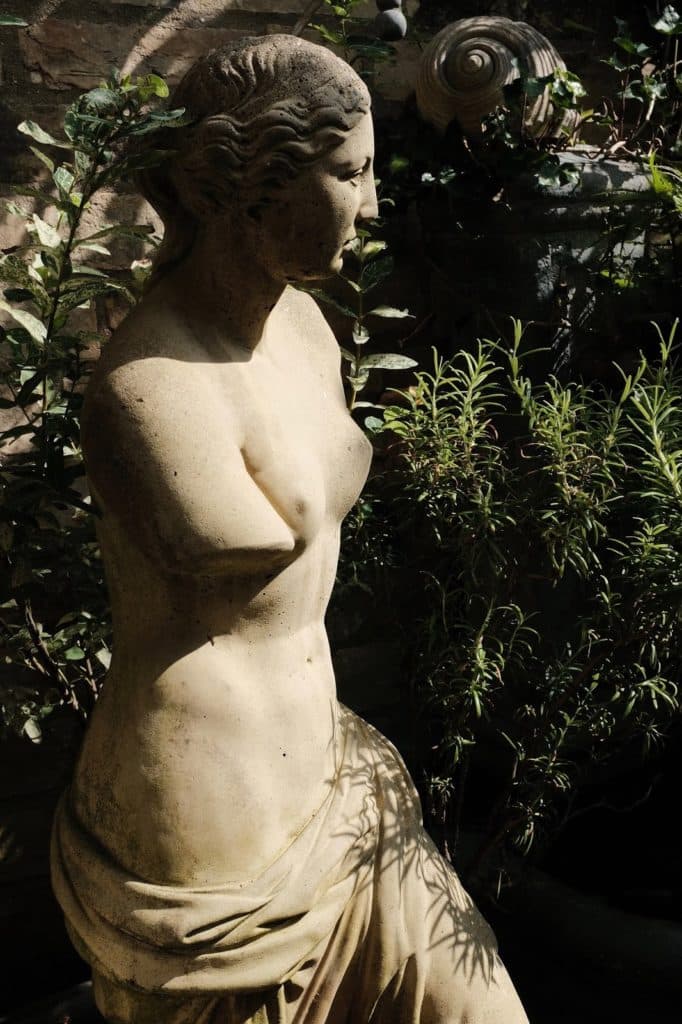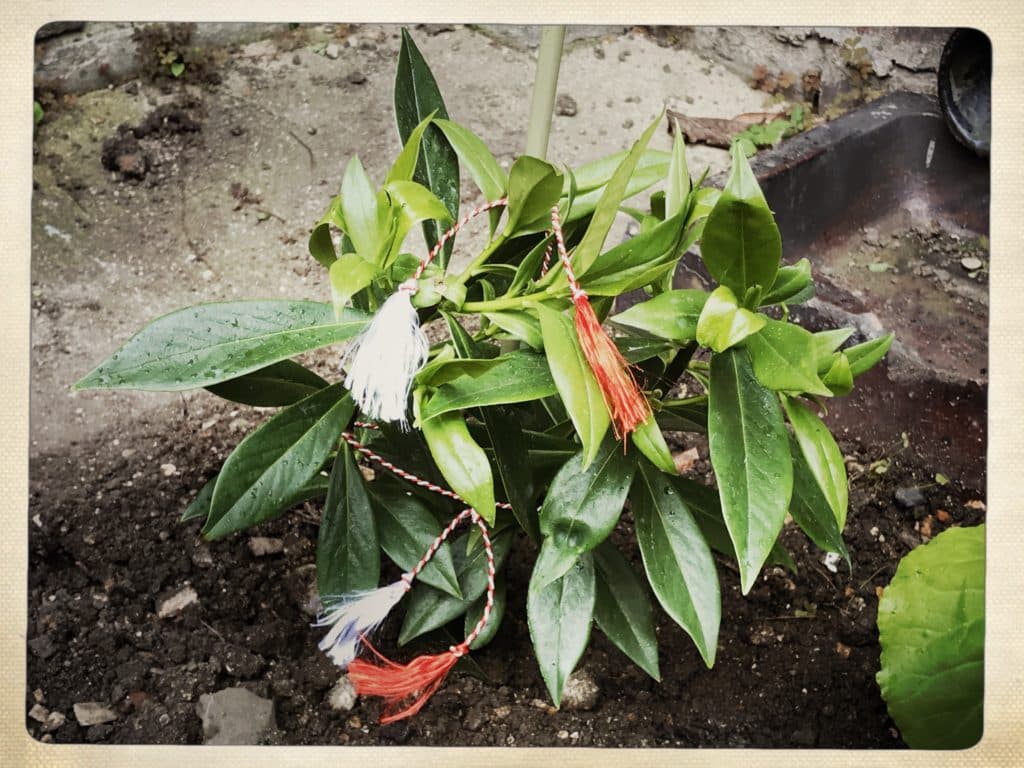A Lucretian Mothering Sunday Meditation

Last year on Mothering Sunday I gave an address called ‘The maternalizing of matter and the materializing of the mother’—A poetic, supreme fiction for our age and, should you wish, you can read it again at the following link:
The Roman poet, Lucretius (c. 99BCE – c. 55BCE), is through and through a materialist (although one of an unusual kind) and so for him there is no supernatural realm. Instead, the immanent, constant, self-creative movement of matter is all that is necessary for the world to be all that it is and is becoming. Stated so boldly, some people find this a cold and bleak way of understanding how the world is, but Lucretius’ genius was to offer this insight in a poetic way that helps us begin to intra-act creatively and compassionately with matter through its poetic ‘face’ (species) as a kind of mother. Lucretius’ primary ‘face’ (or ‘icon’) for this eternally moving, creative, material mother/mothering is the goddess Venus.
But, in holding Venus up as a goddess in this fashion, Lucretius does not depict her as some kind of actual supernatural being standing outside nature making/ordering the world but, instead, as a material symbol/icon through which we can more easily meditate upon the way the material world continually makes and remakes itself without the need for gods. We may say that Lucretius’ depiction of Venus in his poem is a kind of poetic supreme fiction which aims both to help us understand, and be passionate about, the way nature natures (natura naturans) and also how her mothering hand, which is always-already making and touching us and all things, simultaneously, is also always-already being touched back by what it touches (cf. Maurice Merleau-Ponty quoted in Thomas Nail: Lucretius 1, Edinburgh University Press, 2018, p. 88).
As you will read in the Mothering Sunday address I noted above, Thomas Nail reminds us that Venus is
. . . the mother [māter] of Aeneas [one of the mythical founders of Rome], from which the Latin words māteriēs [material] and māteria [matter] also come. Māter is also the tree or matrix, the source of the tree’s growth, whose Indo-European root is described by the Greek word hūlē, meaning tree and matter. First philosophy, for Lucretius, begins with the mother, with matter itself, with the creative power of matter itself to produce all things, the aeneadum (ibid, p. 23).
Nail points out that Venus becomes the material mother-goddess and so the concept of māteriēs ‘both maternalizes matter and materializes the mother at the same time.’
In other words, the mother of all creation is herself made of the same matter that she creates. Her materiality is the same materiality of the world. The mother of matter is the matter of the mother. Her creation is, therefore, the process of matter’s own process of materialization. Maternalization is materialization (ibid, p. 24).
Now you might think that, although philosophically and poetically this may be all very well and good, in the end, it is neither really here nor there as it has no real, practical, pastoral or religious consequences. Perhaps for some this is, and will remain, true but, on Friday of last week I was privileged and honoured to inter in our small memorial garden behind the church the ashes of a young girl called Sophie. The mother, the only person apart from me present, wanted the service to be on the spring equinox (half-way between light and dark, life and death) and for it to be a celebration of the cycles of life in which Mother Nature (māter) takes her own material (māteria) back into herself before gifting that same matter back by creating/sustaining new forms of life. Before we began we planted a daphne (‘Perfumed Princess’) as it was before this young plant that we were gently to lay young Sophie’s ashes to rest. Below, I reproduce the short service we used and I hope that you can see how the opening of Lucretius’ poem, in which he invokes Venus, spoke powerfully to the themes expressed above and served to help us both feel supported as material beings by the touch of Mother Nature’s material, mothering hand. As we touched her—in the form of the soil, Sophie’s ashes, our memories of Sophie (in the material form of our firing synapses), the wind, light, water, the Daphne etc.—she touched us and, in that intra-action (or so it seemed to me), there was the profound experience of knowing that everything touched is always-already being touched back by what it touches. A feeling only reinforced by the fact that, on what was a mostly overcast day, the sun came out and touched us with its warmth and we looked up towards it to touch it with our faces and sight.
At the end of the service we watered the soil around the daphne and above Sophie (an act that was, of course, another kind of touching and blessing) and then the mother tied two Romanian martinkas (which I know through Bulgarian family connections as martenitsas) around the young plant. I did not know the mother was going to do this until that very moment but it was a truly powerful and affecting act because the symbolic meanings of the martinka/martenitsa resonate so strongly with all the Lucretian themes/ideas expressed above. Here’s the relevant passage from the Wikipedia page:

The red and white woven threads symbolize the wish for good health. They are the heralds of the coming of spring and of new life. While white as a colour symbolizes purity, red is a symbol of life and passion, and so some ethnologists have proposed that, in its very origins, the custom might have reminded people of the constant cycle of life and death, the balance of good and evil, and the sorrow and happiness in human life. The Martenitsa is also a stylized symbol of Mother Nature, the white symbolizing the purity of the melting white snow and the red setting of the sun, which becomes more and more intense as spring progresses. These two natural resources are the source of life. They are also associated with the male and female beginnings, and in their balance, with the need for balance in life.
In short, Friday’s service, although it was clearly a moment of profound grief and sadness, with spring blossom and flowers blooming everywhere around us in the garden it was also brought a powerful, healing understanding of in what consists our life (plants, earth, sun and humans) together as mortal, material beings. For our own generation now in the middle of this still evolving pandemic—a time that will assuredly be touched by profound grief and sadness—such an understanding of our own mortal, intra-acting material lives has never been more vital.
An Interment of Ashes for Sophie
It is good to be together at this time and place because we need the comforts both of nature and those we can give one another: human concern, support and love. We have been gathered together here on this Spring Solstice by death. But it is not death really, but life, that has gathered us here—the life that was Sophie’s and the life we share. It is because Sophie loved us and we loved her that we honour her memory this way.
In an immediate and very real way, because this is such a final and physical act, this is the most difficult one we must do when someone whom we loved has died. Yet now, as we stand under the rounding dome of the sky, with the resilient and good earth beneath our feet, washed by sunlight and air, we are helped to know, deep in our flesh, the sure cycles of nature, the fit of a human life span into the seasons of the generations, the earth, and the universe and we understand that there is an unmistakable rightness to what we now do.
¶ A moment of silence . . .
Mother of Aeneas and of his Rome, and of gods
and men the joy, dear Venus, who underneath the gliding
heavenly signals busies the seas with ships and makes
earth fruitful (for only through you are living things conceived
and because of you they rise up to bask in the light of the sun):
from you the harsh winds flee and the skies’ black storm clouds scatter
at your approach; for you the intricate earth sprouts flowers,
wide ocean roads subside into gentle smiling, and furthest
reaches of heaven glow serene in response to your prompting.
In the spring’s first days, the nurturing western breezes breathe
free again, and birds in the air, smitten by you,
warble the news of your coming, as beasts of woods and fields
cavort in the meadows and splash through brooks—and all for love.
Under your spell, all creatures follow your bidding, captive
eager even. Look to the teeming seas, the mountains,
the fast flowing streams, the treetops, or rolling gorse where the birds
flutter and dance the reel of lust as earth once more
renews itself as you have ordained, for you alone
govern the nature of things, and nothing comes forth to the light
except by you, and nothing joyful or lovely is made.
So bearing the naturalness of death to life in our minds we bid farewell to Sophie as we have known her. We honour her completed life and treasure her memory. Now we commit her ashes to the ground in the certainty that the cycle of life continues.
¶ The ashes are scattered . . .
¶ A further moment of silence . . .
We are glad Sophie lived. We cherish her memory. We leave our dead to the keeping of this peaceful plot of earth. With respect we say farewell to Sophie and, in love, we will remember her forever.
—o0o—
Other recent addresses/articles/opinion pieces with a Lucretian theme tied closely to the current COVID-19 pandemic can be found at these links. The first two are by me the third and fourth are by other authors interested in Lucretius and/or Epicurus:
Facts not fear. Clean hands. Open hearts. An Epicurean/Lucretian meditation on how to respond to the ongoing COVID-19 epidemic by Andrew Brown
Learning from Lucretius in the shadow of coronavirus by Andrew Brown
Why a Roman philosopher’s views on the fear of death matter as coronavirus spreads by Thomas Nail
Living Pleasantly in Times of Coronavirus by Hiram Crespo
—o0o—
And, lastly, few other photos of blossom and spring flowers at the Cambridge Unitarian Church in the last couple of days (Click on a photo to enlarge)
